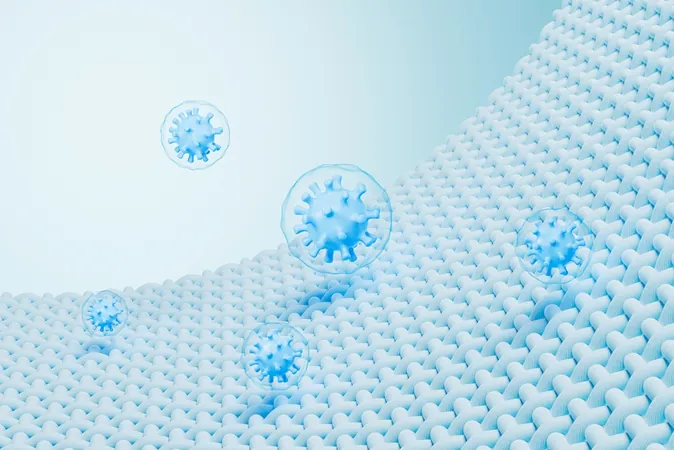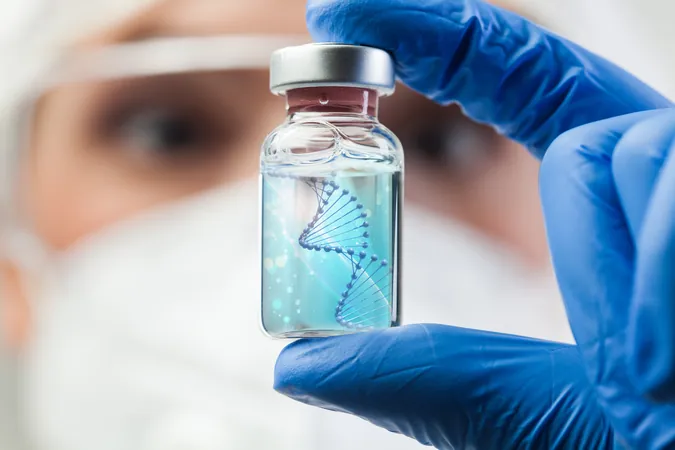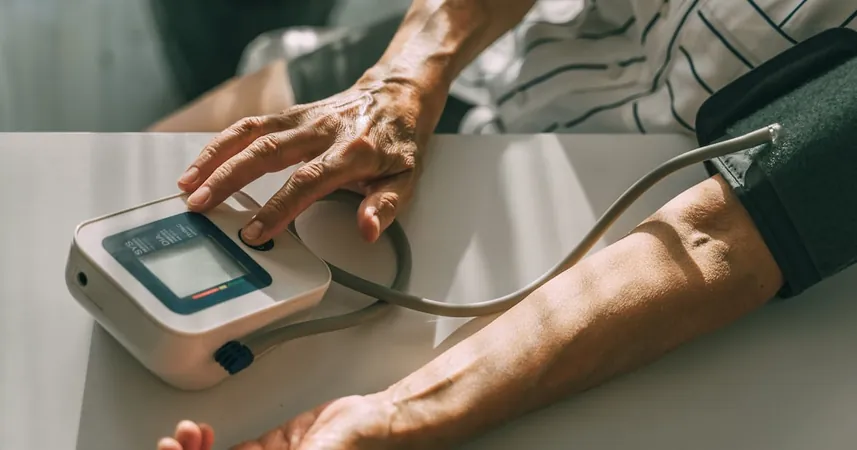
Unseen Defenders: The Revolutionary Science of Antibacterial Coatings
2025-08-22
Author: Liam
Invisible Barriers Against Germs
Imagine surfaces shielded by invisible layers that fend off harmful microorganisms. Antibacterial coatings act as these invisible barriers, expertly designed to prevent the growth of bacteria, fungi, and viruses on diverse surfaces.
Using powerful agents like silver ions and copper compounds, these advanced materials disrupt the cellular functions of microbes, leading to their demise and halting their spread.
Key to Hygiene: Measuring Effectiveness
The success of these coatings can be gauged by their ability to significantly lower microbial presence on surfaces, thereby minimizing contamination risks. Their application spans across various materials—plastics, metals, and textiles—improving safety in both public and private spaces.
A Breakthrough for Healthcare Systems
In hospitals where patient safety is paramount, the introduction of antibacterial coatings is transforming infection control. These innovative materials are strategically applied to high-contact areas like bed rails and surgical tools, creating environments that are less hospitable to harmful bacteria.
Studies have proven that treated surfaces show a remarkable decrease in bacterial loads, vital for safeguarding vulnerable patients. Plus, their durability means they require less frequent replacement, making them both effective and cost-efficient.
Guarding Public Spaces
Public spaces, vital for community interaction, often become breeding grounds for pathogens. High-touch areas, from doorknobs to elevator buttons, facilitate the spread of germs, especially amidst heavy foot traffic.
Implementing antibacterial coatings on these surfaces emerges as a proactive and promising way to enhance hygiene and boost public confidence in health measures during ongoing health challenges.
Innovations: The Next Wave of Antibacterial Solutions
Recent breakthroughs in nanotechnology and material science are paving the way for novel antibacterial solutions. New materials, such as silver nanoparticles and graphene, not only possess robust antibacterial properties but also ensure safety for human cells.
Innovative designs inspired by nature, like those mimicking shark skin, offer improved efficacy and durability for high-traffic environments. Advanced smart technologies are even allowing for surfaces that respond actively upon contact with pathogens.
Expanding Public Health Benefits
Cities can harness the power of antibacterial coatings to enhance public health on a grand scale. By applying these technologies across public transport, schools, and healthcare settings, cities can create environment actively discouraging bacterial growth.
This forward-thinking approach not only protects at-risk populations but also diminishes the burden on healthcare systems, leading to improved air quality and reduced maintenance costs.
Navigating Safety and Regulation Challenges
However, the road to widespread adoption is not without hurdles. Manufacturers and cities must work closely with regulatory bodies like the EPA and FDA to ensure the safety and effectiveness of these coatings. Concerns about resistance development in bacteria also highlight the need for transparency in product formulations.
Successful collaboration among scientists, manufacturers, and regulatory agencies is essential to harness the full potential of antibacterial coatings, maximizing their benefits while ensuring public safety.
Building a Healthier Tomorrow
Antibacterial coatings mark a significant step forward in public health, transforming high-risk surfaces into safer environments. With continual advancements in materials and technology, their potential to revolutionize healthcare and urban infrastructure continues to expand.
Tackling regulatory challenges will be pivotal for their successful implementation, paving the way for healthier cities and communities where the risk of disease transmission is drastically reduced.









 Brasil (PT)
Brasil (PT)
 Canada (EN)
Canada (EN)
 Chile (ES)
Chile (ES)
 Česko (CS)
Česko (CS)
 대한민국 (KO)
대한민국 (KO)
 España (ES)
España (ES)
 France (FR)
France (FR)
 Hong Kong (EN)
Hong Kong (EN)
 Italia (IT)
Italia (IT)
 日本 (JA)
日本 (JA)
 Magyarország (HU)
Magyarország (HU)
 Norge (NO)
Norge (NO)
 Polska (PL)
Polska (PL)
 Schweiz (DE)
Schweiz (DE)
 Singapore (EN)
Singapore (EN)
 Sverige (SV)
Sverige (SV)
 Suomi (FI)
Suomi (FI)
 Türkiye (TR)
Türkiye (TR)
 الإمارات العربية المتحدة (AR)
الإمارات العربية المتحدة (AR)